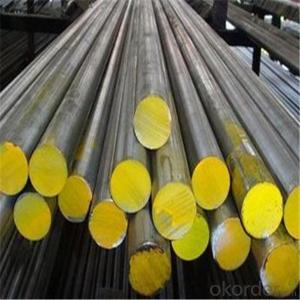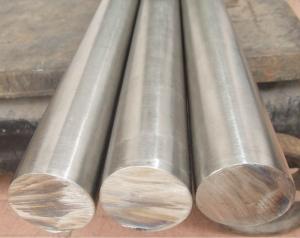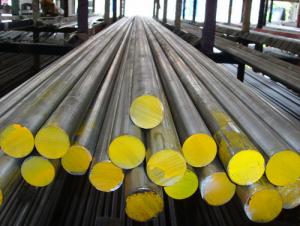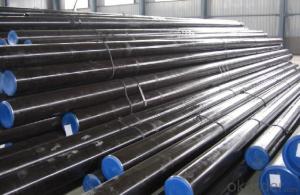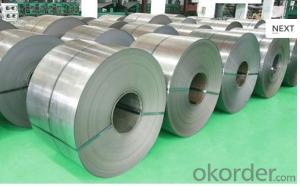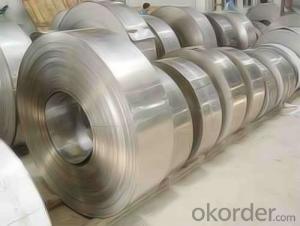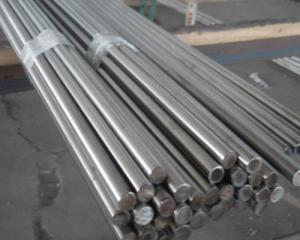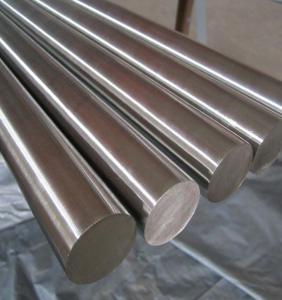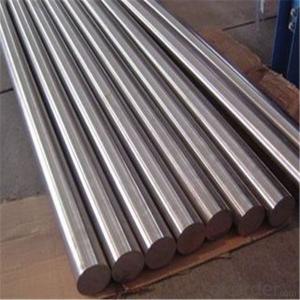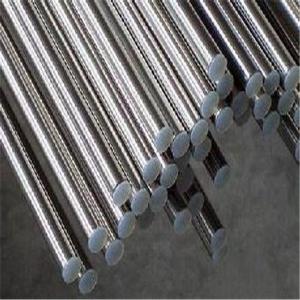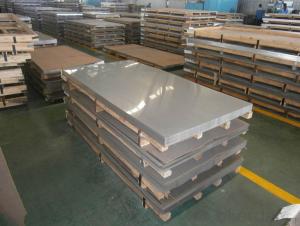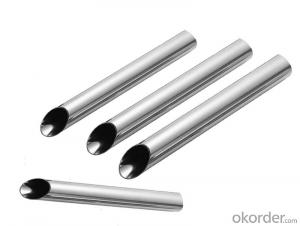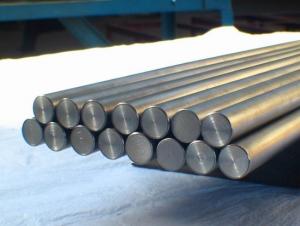Stainless Steel Rebar with competitive price
- Loading Port:
- Shanghai
- Payment Terms:
- TT OR LC
- Min Order Qty:
- 2 m.t.
- Supply Capability:
- 3000 m.t./month
OKorder Service Pledge
OKorder Financial Service
You Might Also Like
Item specifice
1, Diameter: 5.5mm-10mm stainless steel rebar
10m- 40mm stainless steel rebar
2, Length: 6m, 9m, 12m or customized
3, Standard: GB, ASTM, AISI, SAE, DIN, JIS, EN
OEM technology - send detailed technical parameters for accurate quotation.
2, Produce Process: smelt iron - EAF smelt billet - ESR smelt billet -
hot rolled or forged to get the steel round bar and plate
3, Heat Treatment: annealing, normalizing, tempering, quenching
4, Surface Treatment: Black
5, Quality Assurance: We accept third party inspection for all orders.
You can ask testing organizations such as SGS, BV, etc. to test our products before shipping.
Chemical Composition
| Grade | Technical data of the original chemical composition(%) | |||||
| Reinforcing steel bar HRB335 | C | Mn | Si | S | P | B |
| ≤0.25 | ≤1.60 | ≤0.80 | ≤0.045 | ≤0.045 | >0.0008 | |
| Physics Capability | ||||||
| Yield Strength(N/cm2) | Tensile Strength(N/cm2) | Elongation(%) | ||||
| ≥ 335 | ≥490 | ≥16 | ||||
| Reinforcing steel bar HRB400 | C | Mn | Si | S | P | B |
| ≤0.25 | ≤0.16 | ≤0.80 | ≤0.045 | ≤0.045 | 0.04-0.12 | |
| Physics Capability | ||||||
| Yield Strength(N/cm2) | Tensile Strength(N/cm2) | Elongation(%) | ||||
| ≥ 400 | ≥ 570 | ≥ 14 | ||||
PRODUCTS SHOW
F A Q
1, Your advantages?
professional products inquiry, products knowledge train (for agents), smooth goods delivery, excellent customer solution proposale
2, Test & Certificate?
SGS test is available, customer inspection before shipping is welcome, third party inspection is no problem
3, Payment Terms?
30% TT as deposit and 70% before delivery.
Irrevocable L/C at sight.
4, Trading Terms?
EXW, FOB, CIF, FFR, CNF
- Q:Can stainless steel bars be used in food packaging applications?
- Yes, stainless steel bars can be used in food packaging applications. Stainless steel is a popular choice for food packaging due to its many desirable properties. It is corrosion-resistant, making it suitable for contact with various food products. Stainless steel is also hygienic and easy to clean, making it ideal for use in food packaging where cleanliness is crucial. Additionally, stainless steel is a strong and durable material, ensuring that it can withstand the rigorous demands of food packaging applications. Overall, stainless steel bars are a safe and reliable option for food packaging, providing strength, hygiene, and corrosion resistance.
- Q:What are the different surface finishing methods for stainless steel bars?
- There are several surface finishing methods for stainless steel bars, including grinding, polishing, brushing, and pickling. Grinding involves removing surface imperfections and creating a smooth finish by using abrasive belts or wheels. Polishing is a process that enhances the appearance of stainless steel bars by creating a mirror-like finish through the use of polishing compounds and buffing pads. Brushing gives the stainless steel bars a distinctive linear pattern by using abrasive belts or brushes. Pickling involves treating the stainless steel bars with an acid solution to remove any scale or impurities, resulting in a clean and uniform surface.
- Q:Can stainless steel bars be powder coated?
- Yes, stainless steel bars can be powder coated. Powder coating is a process in which a dry powder is applied to the surface of an object and then heated to create a durable and protective coating. While stainless steel is known for its corrosion resistance, powder coating can provide additional benefits such as enhanced aesthetics, improved durability, and increased resistance to chipping, scratching, and fading. Powder coating stainless steel bars can also allow for customization in terms of color and finish, making it a popular choice in various industries, including architecture, automotive, and manufacturing.
- Q:What are the different types of stainless steel bars used in chemical reactors?
- Different types of stainless steel bars are commonly used in chemical reactors, each possessing unique properties and characteristics. 1. Austenitic Stainless Steel Bars, which exhibit exceptional corrosion resistance and high temperature tolerance, are widely utilized in chemical reactors. They are non-magnetic, possess favorable mechanical properties, and can endure various corrosive chemicals. 2. Duplex Stainless Steel Bars, praised for their strength and corrosion resistance, consist of a mixed microstructure of austenite and ferrite. This combination enhances their resistance to stress corrosion cracking and pitting corrosion. These bars are ideal for applications demanding robustness and resistance against aggressive chemicals. 3. Martensitic Stainless Steel Bars are renowned for their strength and hardness. With a higher carbon content compared to other stainless steels, they can be hardened through heat treatment. These bars are commonly employed in applications necessitating durability and wear resistance, such as within agitators and stirring devices in chemical reactors. 4. Precipitation Hardening Stainless Steel Bars offer a unique amalgamation of high strength and corrosion resistance. Through heat treatment, they can attain even greater strength levels, rendering them suitable for chemical reactors operating under high pressure and in harsh chemical environments. 5. Ferritic Stainless Steel Bars are recognized for their resistance to corrosion and oxidation at elevated temperatures. They possess a higher chromium content, providing excellent protection against a wide range of corrosive chemicals. These bars find common usage in chemical reactors where high temperature resistance is crucial. Ultimately, the choice of stainless steel bar for a chemical reactor hinges on the specific application, operating conditions, and the nature of chemicals involved. It is imperative to consider factors such as corrosion resistance, temperature resistance, mechanical properties, and cost when selecting the appropriate stainless steel bar for a chemical reactor.
- Q:What are the different types of stainless steel bar finishes for improved cleanability?
- To improve cleanability, there are various types of finishes available for stainless steel bars. These finishes aim to make the bar surface smoother and more resistant to staining and dirt buildup. One popular finish is the brushed finish, also known as a satin finish. It involves using abrasive materials to create a uniform, brushed pattern on the bar surface. This not only enhances the visual appeal of the bar but also helps conceal any scratches or imperfections that may occur over time. The brushed finish is relatively easy to clean and maintain, making it a preferred choice for applications where cleanliness is crucial. Another type of finish is the mirror finish, achieved by polishing the bar surface to a high shine. This finish is exceptionally smooth and reflective, making it effortless to clean and giving the bar a sleek and modern appearance. However, the mirror finish is more susceptible to scratching and may require more frequent maintenance to retain its pristine look. A third option is the bead blasted finish, achieved by blasting small glass beads at high pressure onto the bar surface. This creates a textured, matte finish that resists fingerprints and is easy to clean. The bead blasted finish is commonly used in applications that desire an industrial or rugged look, as it effectively conceals any surface imperfections. Additionally, there are specialized finishes available for specific applications. For instance, electropolished finishes are utilized in industries like pharmaceuticals and food processing, where an exceptionally smooth and clean surface is necessary to prevent contamination. These finishes are achieved by immersing the stainless steel bar in an electrolyte solution and applying an electric current, resulting in the removal of surface imperfections and the creation of a highly polished finish. Ultimately, the choice of stainless steel bar finish depends on the specific requirements of the application, as well as factors like aesthetics and ease of maintenance. By selecting the appropriate finish, it is possible to enhance the cleanability of stainless steel bars and ensure they remain in optimal condition for extended periods of time.
- Q:What are the different types of stainless steel bars used in oil refineries?
- There are several types of stainless steel bars commonly used in oil refineries, including austenitic stainless steel bars, martensitic stainless steel bars, and duplex stainless steel bars. Austenitic stainless steel bars, such as grades 304 and 316, are the most commonly used due to their excellent corrosion resistance and high temperature strength. Martensitic stainless steel bars, like grade 410, are used for applications requiring high strength and moderate corrosion resistance. Duplex stainless steel bars, such as grades 2205 and 2507, are utilized for their superior resistance to corrosion, stress corrosion cracking, and erosion. Each type of stainless steel bar has its own unique properties and is chosen based on the specific requirements and conditions of the oil refinery.
- Q:Are stainless steel bars suitable for elevator components?
- Yes, stainless steel bars are suitable for elevator components. Stainless steel is known for its strength, durability, and corrosion resistance, making it an ideal material for elevator components that require reliability and longevity.
- Q:Can stainless steel bars be used in architectural designs?
- Architectural designs can indeed incorporate stainless steel bars. This material is highly adaptable and long-lasting, providing numerous advantages for architectural purposes. Its exceptional resistance to corrosion makes it ideal for outdoor use in buildings, as it can endure harsh weather conditions without rusting or deteriorating. Stainless steel bars are suitable for various architectural elements, including handrails, balustrades, staircases, facades, and decorative features. The sleek and contemporary appearance of stainless steel enhances architectural designs, making it a favored choice among architects and designers. Furthermore, stainless steel bars can be easily customized and fabricated to meet specific design requirements. They can be shaped, bent, and welded into diverse forms, allowing for imaginative and intricate designs. Stainless steel also offers multiple finishes, such as brushed, polished, and textured, enabling architects to achieve their desired aesthetic appeal. Apart from its aesthetic qualities, stainless steel is renowned for its strength and durability. It possesses exceptional tensile strength, making it suitable for structural applications in architecture. Whether utilized in load-bearing structures or as decorative accents, stainless steel bars provide the necessary strength and stability. Additionally, stainless steel is an environmentally friendly choice for architectural designs. It is a recyclable material, thereby reducing its environmental impact. Moreover, its long lifespan and resistance to corrosion minimize the need for maintenance and replacement, contributing to the overall sustainability of a building. In conclusion, stainless steel bars are an outstanding option for architectural designs. They offer a combination of aesthetic appeal, durability, adaptability, and sustainability, making them well-suited for a wide range of applications in the field of architecture.
- Q:What are the different sizes available for stainless steel bars?
- Stainless steel bars are available in a wide range of sizes to meet various industrial and commercial requirements. The sizes of stainless steel bars typically include diameter, width, and length measurements. For diameter, stainless steel bars can range from as small as 1/16 inch (1.59 mm) to as large as 24 inches (609.6 mm) or even greater in some cases. The diameter of the bar often determines its primary application and load-bearing capacity. Smaller diameter bars are commonly used in small-scale applications such as jewelry making or precision engineering, while larger diameter bars are more suitable for heavy-duty applications like construction or structural components. Width is another important dimension of stainless steel bars. Width refers to the thickness or breadth of the bar and can vary greatly depending on the specific type of bar. Common widths for stainless steel bars range from 1/8 inch (3.18 mm) to 12 inches (304.8 mm) or more. The width of the bar is typically chosen based on the desired strength, stability, and intended use of the final product. Lastly, the length of stainless steel bars can also vary significantly. Standard lengths for stainless steel bars are often 12 feet (3.66 meters) or 20 feet (6.1 meters). However, custom lengths can be obtained to suit specific project requirements. Longer bars are typically used in construction or industrial applications, while shorter bars may be suitable for smaller projects or specialized applications. In conclusion, stainless steel bars are available in a wide range of sizes, including various diameters, widths, and lengths, to cater to different industries and applications. The choice of size depends on the intended use, load-bearing capacity, and specific requirements of the project or application at hand.
- Q:What are the different types of stainless steel bars used in architectural railing systems?
- There are several types of stainless steel bars commonly used in architectural railing systems, including round bars, square bars, rectangular bars, and flat bars. These bars can be further categorized based on their surface finish, such as polished or brushed, and their grade of stainless steel, such as 304 or 316. The choice of bar type depends on the specific design requirements, aesthetic preferences, and the level of durability and corrosion resistance needed for the railing system.
1. Manufacturer Overview |
|
|---|---|
| Location | |
| Year Established | |
| Annual Output Value | |
| Main Markets | |
| Company Certifications | |
2. Manufacturer Certificates |
|
|---|---|
| a) Certification Name | |
| Range | |
| Reference | |
| Validity Period | |
3. Manufacturer Capability |
|
|---|---|
| a)Trade Capacity | |
| Nearest Port | |
| Export Percentage | |
| No.of Employees in Trade Department | |
| Language Spoken: | |
| b)Factory Information | |
| Factory Size: | |
| No. of Production Lines | |
| Contract Manufacturing | |
| Product Price Range | |
Send your message to us
Stainless Steel Rebar with competitive price
- Loading Port:
- Shanghai
- Payment Terms:
- TT OR LC
- Min Order Qty:
- 2 m.t.
- Supply Capability:
- 3000 m.t./month
OKorder Service Pledge
OKorder Financial Service
Similar products
New products
Hot products
Hot Searches
Related keywords
